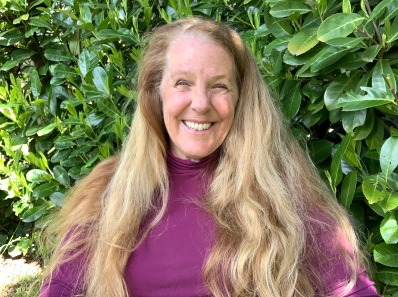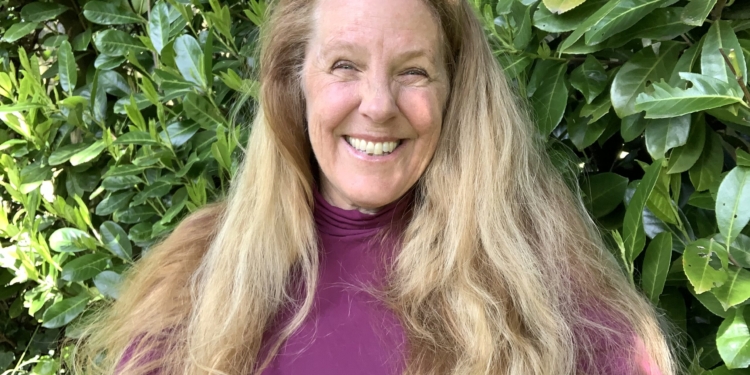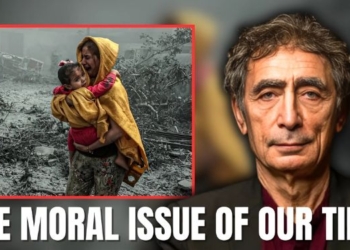 Is it possible to bring peace to troubled situations, and can we facilitate this simply through our presence?
Is it possible to bring peace to troubled situations, and can we facilitate this simply through our presence?
Love, Rapport, and Compassion
I greatly enjoyed watching a conversation Melinda Iverson Inn had with Dr. Patrick MacManaway on Love, Rapport, and Compassionate Witness. There is a special kind of rapport that occurs in energetic healing, where healers maintain vibrational spaces that are conducive to healing. As Dr. MacManaway puts it,
“The person being healed would come out of that state and after a few minutes, the Healer would come out of it. So just in terms of context of understanding, in terms of protocols, or is it really just rapport. That was instructive to me, just to see it was literally a vibrational space that the Healer was holding that the person was then able to phase entrain with, I guess would be our contemporary language. And in that phase entrained grace state, everything goes with that, and the job was done.”
While I was working on writing this post, I was thinking about the many times I've worked with clients one-on-one, and experienced the beautiful power of presence–even when working with people via the internet over video screens. There indeed does exist a healing presence that we can share with the world, though most people give little thought to the immense power that each of us holds in this way.
 Unified Harmonious Spirit
Unified Harmonious Spirit
A key principle in martial arts is the concept of attaining a relaxed, peaceful, balanced state of harmonious alignment within oneself. With such a mindset, one's Body, Mind, and Spirit move with one accord–with one intentional focus of concentration, willpower, and spirit.
In the martial art of Kuk Sool Won, this is known as jung shin (also known as jeong shin). This harmonious state of being involves concentration and focus of unified mind and spirit, yet also demands demonstration of respect through etiquette and manners. All of this is essential when training with weapons, such as swords and staffs, and it culminates in the extraordinary gift that proper jung shin mindset can confer, such that one with superior jung shin can defeat opponents who have superior technique, experience, strength, and skill.
I have witnessed this principle of jung shin proving to be victorious in the face of seemingly insurmountable odds on several occasions, and I recognize in the integrity and alignment present in this state of mind which serves to elevate one's sense of options far beyond what can be seen from egoic, three-dimensional perspective.
Be the Peace and Love You Wish to Find in the World
I received an email with exactly the quote I was wishing for to convey the sense of tranquility, neutrality and peace we can bring into the world. A friend sent me a poem by Yeats that exactly captures this feeling:
We can make our minds so like still water
that beings gather about us that they may see, it may be, their own images,
and live for a moment with a clearer, perhaps even with a fiercer life
because of our quiet, our silence.
–W.B. Yeats
This idea that Yeats describes can be adopted and experimented with, any time you wish to see what kind of difference you might notice when you bring a sense of such peace and inner alignment into your relationships with others.
Chaos Theory and the Butterfly Effect
All of this sounds wonderful in a perfect world, you might well be thinking, but how might we be best facilitate bringing optimal events together in a complex world amidst chaotic times? The clue to how we might bring such concepts and mindset to chaotic times comes from the word, “chaos,” itself. The origins and etymology of the word, “chaos” come from the Greek khaos, meaning “abyss, that which gapes wide open, that which is vast and empty.” Our modern-day interpretation of chaos as “utter confusion” arose circa 1600, taken from the “void at the beginning of creation, the confused formless, elementary state of the universe.”
Around 1977, chaos theory was born, introducing the idea that there exist mathematical patterns and structure to the chaos, with practical applications. Chaos theory has since grown as an interdisciplinary branch of mechanics and mathematics that studies apparently random or unpredictable behavior in systems governed by deterministic laws. One of the biggest ideas from chaos theory is that the tiniest change in a system can potentially result in huge changes in that system's behavior. This principle is popularly known as “the Butterfly Effect.” According to the butterfly effect theory, a butterfly flapping its wings in one part of the world can cause massive consequences in another part of the world.
An example of the Butterfly Effect can be seen in an administrative error that accidentally sparked the fall of the Berlin Wall. In 1989, a spokesman named Gunter Schabowski had the job of reading an official notice stating that there had been a major change in how people could visit the Berlin Wall, such that as long as East Germans applied for permission, they could now visit the West. This notice was difficult to understand, and Schabowski interpreted it mean that anyone with a passport could visit whenever they wished. When a reporter asked Schabowski when these new rules would take effect, Schabowski replied, “immediately.” Such a rush of people arrived after this announcement that crowds of people with a shared intent arrived at the Berlin Wall, that the wall was effectively gone.
Attracting Optimal Flow of Events
How might we best harness aspects of deterministic chaos theory to help ensure optimal unfolding of events in our lives? One of the big ideas we can gain from chaos theory is that complex systems–such as life on Earth–actually contain complicated systems of order. While dependably unpredictable, deterministic chaos theory shows us that as much as we may wish to find deterministic order in the world, Nature indicates that indeterminism rules.
Chaos theory includes an idea of ‘Attractors.' Attractors are end points toward which a system tends to evolve, from a wide variety of possible starting conditions. These attractors are capable of disrupting even large systems in dramatic fashion–contributing to sudden shifts to entirely new states of being.
Science fiction author, Isaac Asimov, included ideas from chaos theory and attractors in his Foundation series. The hero and protagonist of the Foundation books, Hari Seldon, is a man who scientifically predicts the behavior of events involving human populations through generations and centuries using a field of mathematics he invented, that he calls “psychohistory.” When Seldon predicts doom and failure for his Galactic Empire, he predicts that art, science, and all the jewels of civilization will collapse along with it. To help preserve the best that humanity has to offer, Seldon establishes the Foundation as a planet-university to help provide humanity with inspiration, protection, and guidance during a time of crises, to assist civilization rising again.
We will do well to ask how we might see possible future ‘Attractors’ capable of pulling order out of chaos, and who and what such top Attractors will likely be.
 Might We be the Attractors We're Looking for?
Might We be the Attractors We're Looking for?
The shape of everything that is self-sustaining–such as deterministic chaos attractors–can be seen in toroidal fractals, where consciousness itself consists of interacting toroidal fields. Our chakras–or energy centers–have a toroidal shape, as does our entire human aura. This suggests the possibility that we might well be the Attractors we've been looking for. And we can become optimal Attractors of positivity, even in chaotic times.
Part of what I love most about asking my favorite focusing question, “How good can it get?” is the way that it invites Nature to provide answers that we'll actually enjoy living the answer to. In this case, it's entirely possible the answer may surprise and delight us!
. . . . . . . . . . . . . . .
REFERENCES:
Asimov, Isaac. Foundation: Isaac Asimov. Panther, 1960.
Duffield, Lee. “Historical and personal perspectives on the fall of the Berlin Wall, 1989: Address to 20th Anniversary Forums.” Berlin Wall Anniversary: Commemorative Event (2009): 1-6.
Hallander, Jane. “The Secrets of the Korean Sword.” Black Belt. November 1983. pp. 20-26.
Hallander, Jane. “Korean Swordsmanship.” Black Belt. March 1999. pp. 32-180.
Inn, Melinda Iverson. “Love, Rapport, and Compassionate Witness with Patrick MacManaway.” Wisdom Keepers of Earth. Season 2, Episode 1. 17 Nov 2022. https://youtu.be/GpplJhk1mx0
Larson, Cynthia. “Evidence of shared aspects of complexity science and quantum phenomena.” Cosmos and History: The Journal of Natural and Social Philosophy 12, no. 2 (2016): 160-171. https://realityshifters.com/media/Larson2016EvidenceComplexQuant.pdf
Palumbo, Donald. “Psychohistory and Chaos Theory: The” Foundation Trilogy” and the Fractal Structure of Asimov's Robot/Empire/Foundation Metaseries.” Journal of the Fantastic in the Arts 7, no. 1 (25 (1996): 23-50.
You can watch the companion video to this blog here:
___________________________
 Cynthia Sue Larson is the best-selling author of six books, including Quantum Jumps. Cynthia has a degree in physics from UC Berkeley, an MBA degree, a Doctor of Divinity, and a second degree black belt in Kuk Sool Won. Cynthia is the founder of RealityShifters, and first President of the International Mandela Effect Conference. Cynthia hosts “Living the Quantum Dream” on the DreamVisions7 radio network, and has been featured in numerous shows including Gaia, the History Channel, Coast to Coast AM, One World with Deepak Chopra, and BBC. Cynthia reminds us to ask in every situation, “How good can it get?” Subscribe to her free monthly ezine at:
Cynthia Sue Larson is the best-selling author of six books, including Quantum Jumps. Cynthia has a degree in physics from UC Berkeley, an MBA degree, a Doctor of Divinity, and a second degree black belt in Kuk Sool Won. Cynthia is the founder of RealityShifters, and first President of the International Mandela Effect Conference. Cynthia hosts “Living the Quantum Dream” on the DreamVisions7 radio network, and has been featured in numerous shows including Gaia, the History Channel, Coast to Coast AM, One World with Deepak Chopra, and BBC. Cynthia reminds us to ask in every situation, “How good can it get?” Subscribe to her free monthly ezine at:














